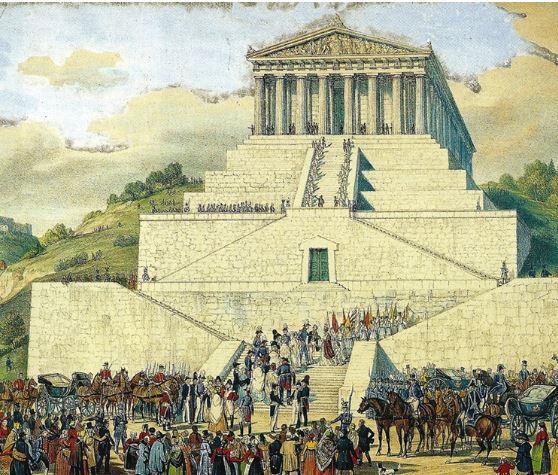Walhallah

🏛️ Walhalla Memorial Overview
-
📍 Location: Perched above the Danube River in Donaustauf, near Regensburg, Bavaria, Germany.
-
🏗️ Built: Commissioned by King Ludwig I of Bavaria, construction began in 1830 and was completed in 1842.
-
👷♂️ Architect: Designed by Leo von Klenze, in the style of a neoclassical Greek temple, inspired by the Parthenon in Athens.
✨ Purpose & Symbolism
-
It’s a hall of fame for great German-speaking figures—from poets and scientists to monarchs and warriors.
-
Named after the Norse Valhalla, but instead of warrior souls, it honors those who shaped Germanic culture and history.
-
It's meant to unify German identity—this was pre-unification, so Ludwig’s vision was part cultural pride, part nationalistic dream.
🏛️ Inside the Temple
-
The interior houses busts and plaques of more than 130 figures (and still growing).
-
Honorees include:
-
Johann Wolfgang von Goethe (poet)
-
Immanuel Kant (philosopher)
-
Martin Luther (reformer)
-
Albert Einstein (added later)
-
Ludwig van Beethoven (composer)
-
And even non-Germans like Nicolaus Copernicus—because he worked in German-speaking lands.
-
🏞️ Architecture & Vibes
-
Exterior: Massive marble columns, perched high with stunning views over the Danube.
-
Interior: Stark, solemn, reverent—like a place for contemplation and cultural worship.
-
It’s kind of like Germany’s answer to the Pantheon, Mount Rushmore, and Westminster Abbey all in one.
🧠 Modern Take
-
The Walhalla Memorial continues to add new names—though the process is deliberate and often debated, since it touches on identity, politics, and legacy.
-
It’s both a tourist site and a living monument, where history is still being written in stone.

